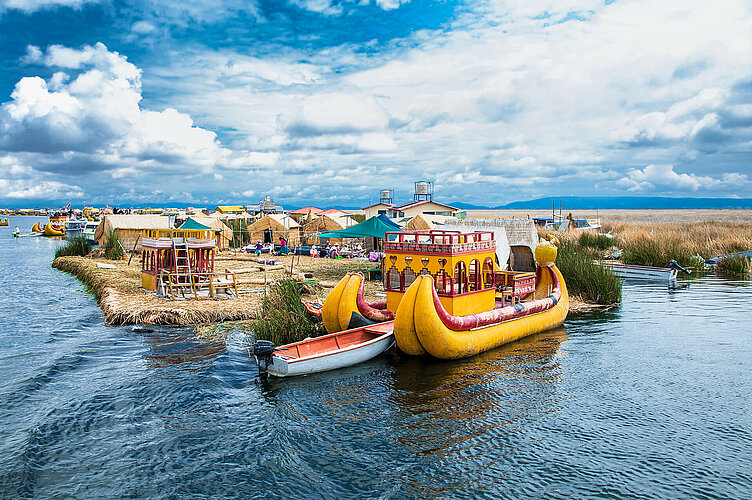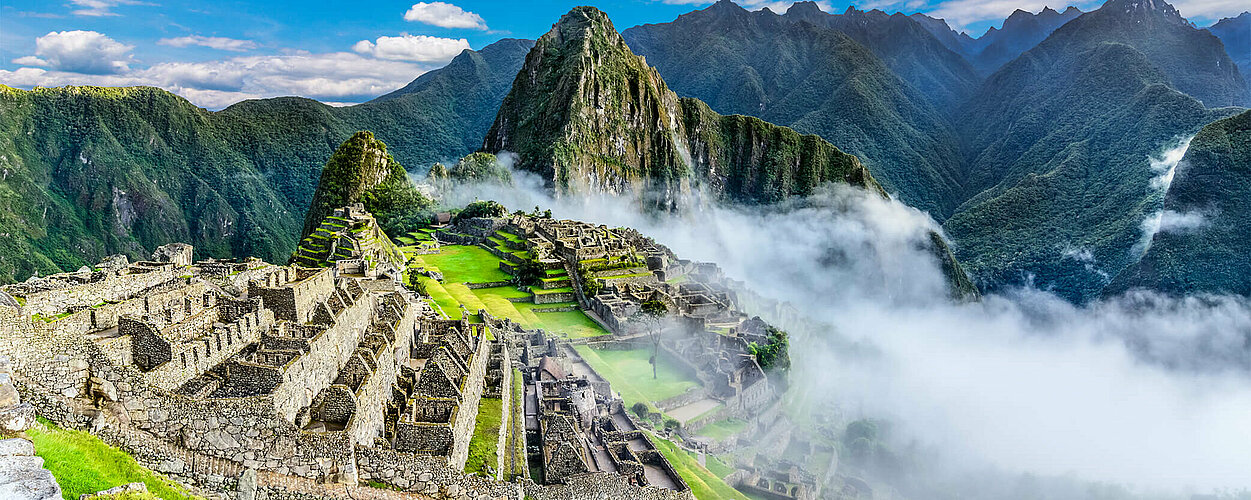Sacsayhuamán
Built in the 15th century on a plateau north of the former Inca capital of Cusco, the Sacsayhuamán fortress is one of the most impressive ruins from the pre-colonial period. The construction began under the Inca ruler Pachacútec Yupanqui.
Construction
It is located at an altitude of 3,701 meters (12,142 ft) and consists of stones up to 9 meters (29.528 ft) high and weighing almost 200 tons that were brought from a distance of over 20 kilometers (12.427 mi). As with other Inca structures, the blocks were carved with amazing precision so that they fit together seamlessly. It is estimated that over 20,000 people were employed during the decades of construction. After the Spanish conquest in 1533, an Inca rebel army led by Manco Inca Yupanqui attempted to recapture Sacsayhuamán from 1536 to 1937, but failed. Much of the citadel was used as a source of materials during the Spanish colonial period.
Present-day use
Together with Cusco, the ruins were designated a UNESCO World Heritage Site in 1983. The complex was originally used primarily for religious rituals and the traditional winter solstice festival "Inti Raymi" is still celebrated at the ruins every year on 24th June. The name Sacsayhuamán is the Spanish derivation of the Quechua word "Saqsaywaman" and means something like "contented hawk".
Facts
- Location: Cusco Region
- Altitude: 3,701 m (12,142 ft)
- Built: 15th century
- Earliest settlement: about 900 AD
- Conquered by the Spanish: 1533
- UNESCO World Heritage Site: City of Cuzco (1983)
Sacsayhuamán Folding Card
Because of its priceless cultural value, the ruins are also featured on Peruvian currency. This special folding card contains a 5 Soles de Oro banknote with a portrait of the Pachacútec Yupanqui and the ruins, introduced in 1968, and a 1 Sol de Oro coin, first issued in 1966, depicting a vicuña, the national animal of Peru.
5 Soles de Oro
Obverse: Pachacútec Yupanqui (1438–1471), Inca ruler of the Kingdom of Cusco and founder of the Inca Empire, national coat of arms, ceramics
Reverse: Ruins of the Inca fortress of Sacsayhuamán, glyphs
| Dimensions: 157 x 67 mm (6.18 x 2.64 in) Material: Paper |
1 Sol de Oro
Obverse: National coat of arms
Reverse: Vicuña (national animal of Peru)
| Weight: 9 g (0.02 lb) Diameter: 27.80 mm (1.09 in) Material: Brass |












